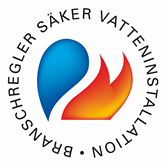Sanitary water flows for housing
The Swedish building codes have had basically the same requirements for water flows since 1970 – for 50 years. This has meant that established methods for sizing tap water pipes and designing taps with today's function have been developed.
Background
Water flows from the taps in a household, i.e. taps for washbasins, showers, baths and sinks, have been in Sweden standardized for more than 50 years (This also applies to WC). Without exaggeration, it can be said that the water flow from an ordinary faucet is perceived as obvious and hardly something you reflect on in everyday life. How would you feel if the water flow is restricted, perhaps to half of what you used to with today's technology?
The Swedish building codes have had basically the same requirements for water flows since 1970 – for 50 years. This has meant that established methods for sizing tap water pipes and designing taps with today's function have been developed.
Work has been underway on energy conversion of buildings for several years. As part of this, there are different environmental classification systems for building parts and building functions. Some common systems are BREEAM, LEED and the Swedish system Svanen. The water flows that are set as requirements for high scores is in most cases a significant reduction in the water flow.
Studies of effects of flow reduction
Several aspects are interesting and can be investigated separately or as a combination.
The work may include study visits or laboratory sessions at special labs in Sweden or Norway.
- Energy use at different water flows
Calculations of actual reduction in energy consumption at different peak water flows and at the flows specified in the most common classification systems; Water use for various functions/activities in the home should be taken into account based on previous surveys. The results can be reported as energy use and saving potential per home and for society. An estimate of cost savings per home should be made.
Possible discussions (possibly based on interviews):
-What is the significance of points in the environmental classification systems (especially for water flows) for a property developer and for an future owner on a condominium or rental apartment?
- How can lowering the maximum water flow for each tap/activity likely affect the consumer's experience?
- Technical consequences of lowering the highest water flow
The current guidelines for the dimensioning of tap water pipes are based on the water flows specified in the Building Regulations of the National Board of Housing, Building and Planning. A lowering of the highest allowable water flow for different types of tap points can most easily be achieved through the "new" design of taps. How does such a reduction affect the ability to manufacture faucets with good function?
Can/should you change the distribution size dimension? If so, what is the impact on the dynamic stability of the tap water system? Is the operation of the faucets affected? Is there a risk of water hammering in the piping system? Will there be an increased risk of growth of microorganisms, especially legionella, if you lower water flows and/or change the pipe dimensioning?
Possible discussion (possibly based on interviews):
- With lower water flows, the waiting time for hot water (and cold water) will increase significantly. How will residents experience this?
- How do residents experience a reduction in the highest possible water flows?
A reduction in flows from faucets will certainly be experienced negatively by the user but can perhaps be accepted after some time as necessary for the conversion of our energy use.
In KTH's Live-in lab, it may be possible to try different water flows in student housing by installing new faucets or otherwise manipulating the water flow. The implemented changes are followed up with interviews to investigate how function and comfort are experienced. An assessment should also be made of how the relevance of flow changes is perceived. You can also compare the attitude of the residents about making information about the energy and climate effect or if you do not make any information.
The project is run together with Safe Water

Supervisors and contact persons
Säker Vatten AB, Box 17154, 104 62 Stockholm
Tel 08-762 73 00
